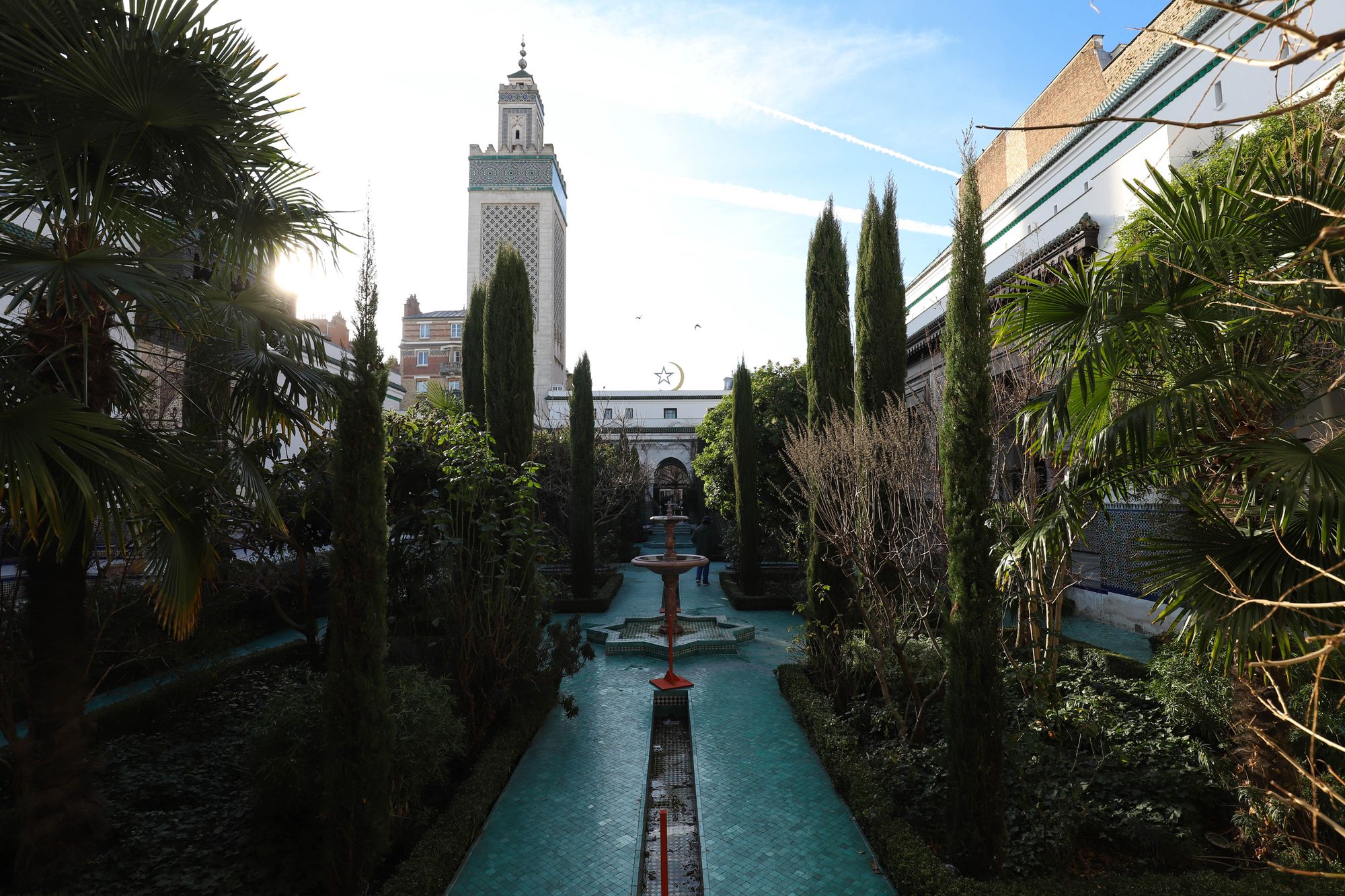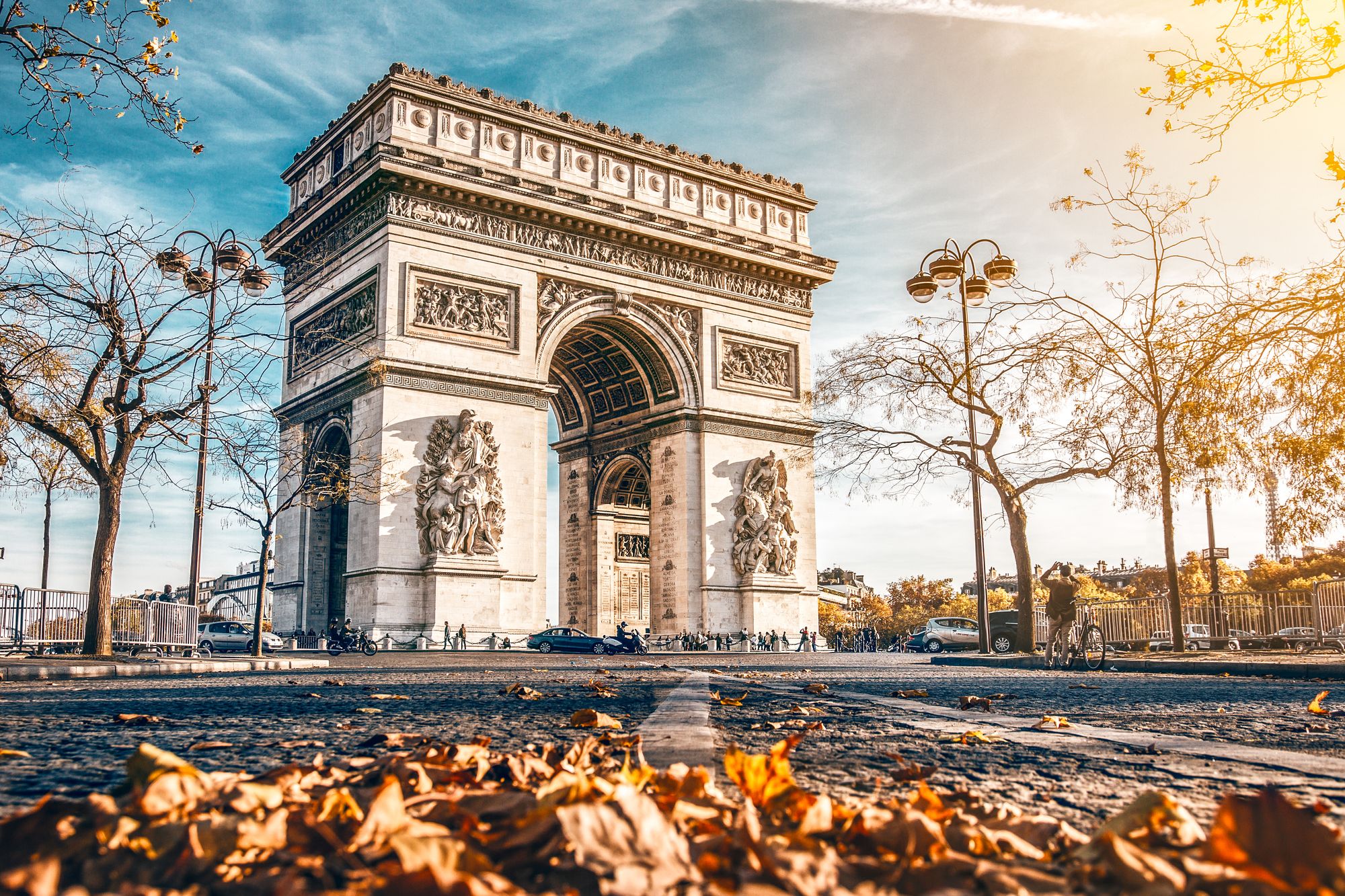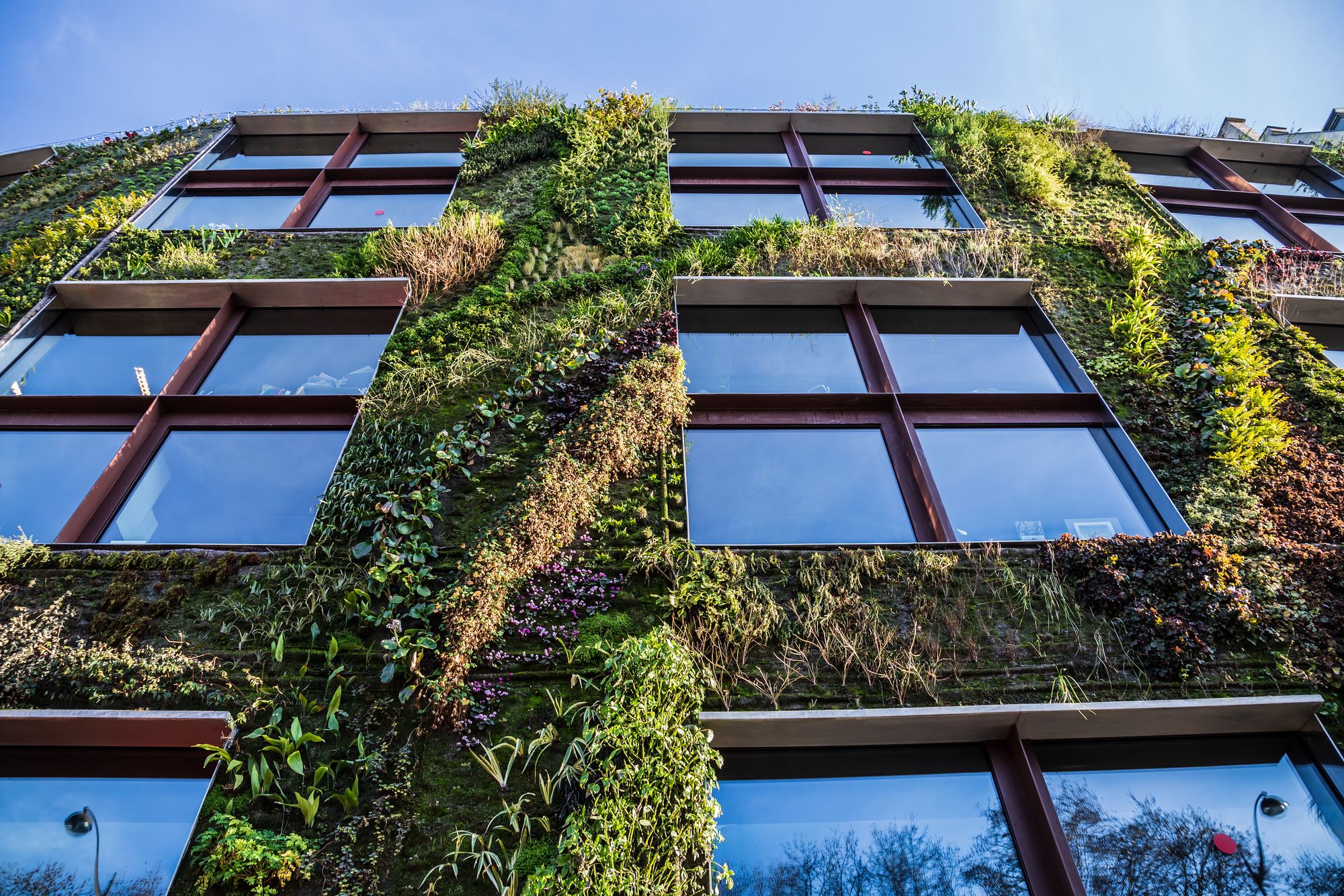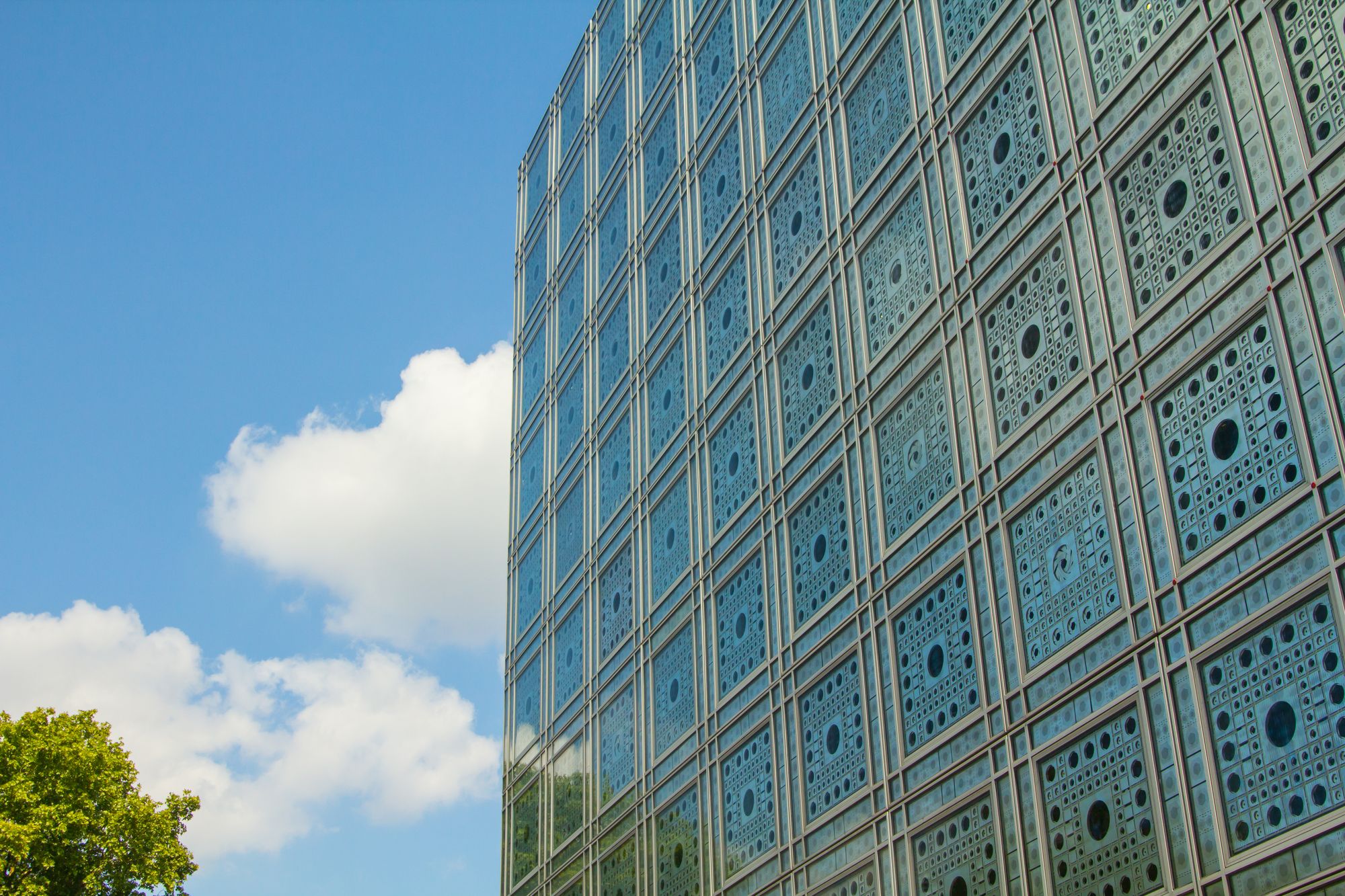Paris: A city full of untold stories
When we picture the city of Paris, we see the world-renowned Eiffel Tower towering over the famous Champ-de-Mars. Known as the city of love with its aura of effervescence, romance and elegance, Paris lives in our collective imagination as the timeless city of light, a name that emerged in the Age of Enlightenment.
Paris has a network of Islamic presence interwoven with its identity. The French capital also boasts an amazing amount of Islamic history. While some are evident, others require contextualisation for a valuable revelation of Muslim Parisian histories dating back centuries. As the city has myriad identities, one could argue that this jewel in Europe's crown owes part of its prestige to Islam.
The Age of Enlightenment and Islam
France's modern identity finds its roots in the Age of Enlightenment. The City of Light not only gained fame through the scientific and technological developments of the time (the first city to have electric street lights in 1878), but also paved the way for intellectual blossoming. The reputation of Paris blossomed through philosophy and the maturation of ideas such as liberty, equality and fraternity. This flourishing of modern civilisation, which Western society still honours to this day, owes much to Islamic exchanges. In fact, the late Renaissance and the Age of Enlightenment and Discovery in Paris were in part linked to the Muslim world in ways that are difficult to imagine given our contemporary reality.
Cross-cultural mobility was evident through tangible exchanges such as trade, diplomacy, and religious pilgrimages to the Holy Land. However, there have also been intangible exchanges that are much more difficult to track. The first translation of the Qur'an into the French language (1647, L'Alcoran de Mahomet), the rise of Orientalism and Arabic studies in upper-class circles, and exploration of Islamic Golden Age philosophy all sown the seeds and created the landscape in which Paris has cultivated its current prestige.
Writers like Voltaire and Rousseau, who are canonised as enlightened philosophers, often engaged rationally with Islamic principles and societies, drawing inspiration from translated texts or encounters with the Muslim world. As the international axis of power shifted, French colonisation of Muslim countries (Algeria in 1830, followed by British Aden 1937, Tunisia in 1881, Egypt in 1882, Sudan in 1889) implied direct contact with the ideas and peoples of Islam, concepts that would invade the curves of Parisian infrastructure.
Grand Mosque of Paris
The Grand Mosque of Paris is the most emblematic symbol of France's relationship with Islam. The history of the mosque begins in the second half of the 18th century, at the peak of the Age of Discovery. Ottoman officials settling in Paris demanded the construction of an official mosque and received financial support from the Ottoman Sultan, the Viceroy of Egypt and from the Sultan of Morocco with the approval of the Committee of French Africa. However, when the Ottomans became an enemy of the French during World War I, construction was halted. In 1926, the mosque was finally updated to its remarkable magnificence. The mosque pays homage to North African and Moorish architectural splendour and contains elements of the Al-Qarawiyyin Mosque in Fes, Morocco, the oldest university mosque in the world, and the Al-Zaytuna Mosque in Tunis, Tunisia.

Contrary to popular belief, the Grand Mosque of Paris is not the oldest in France, being preceded by 9th-century mosques in southern France from the early Arab conquests. However, these have not stood the test of time. The Grand Mosque of Paris is the heart of France's Muslim community and is a reminder of the interfaith coexistence that existed between the state and its Muslim citizens long before today's religious tensions. It is one of the Paris monuments that pay homage to the tens of thousands of Muslim soldiers who were killed fighting for France in World War I.
World War 2 and Islam
The Grand Mosque was also the setting for a remarkable heroic story in the face of injustice. Si Kaddour Benghabrit, an Algerian religious leader and Grand Mosque official, saved the lives of numerous Jews during the Nazi occupation of France (Vichy France, 1940 - 1944). Exact numbers are difficult to ascertain, but historians estimate that 500-1600 Jews were saved. Jews secretly met with Benghabrit, who provided them with Muslim identification papers and hid Jews in the mosque's underground passages when supplies ran out. A warning system was set up using flashing lights in a specific pattern to warn hidden Jews as the Nazis stormed the mosque.
One of the most notable stories Benghabrit undertook to save Jews was the mission he carried out to rescue Salim Halali, an Algerian Jew who was an iconic cabaret singer celebrated in Paris. In addition to providing Halali with Islamic papers issued by the mosque, Benghabrit etched his father's name on an unmarked grave in a Muslim cemetery to cement Halali's claim to Islam and protect him from Nazi interrogation.
Top Parisian sites with Islamic history
Luxor Obelisk on Place de la Concorde
The Place de la Concorde was originally known as Place de la Révolution (Revolution Square) due the execution by guillotine of King Louis XVI and of Marie Antoinette, as well as other royal members and eventually Revolutionary leaders such as Maximilien Robespierre.

In 1830 the name was changed to Place de la Concorde. In 1836, the 3,300-year-old Luxor obelisk from the Luxor Temple in Egypt, given to the newly constituted French government by the Viceroy of Egypt, Mohammad Ali Pasha, was re-erected in the centre of the Place de la Concorde after a two-year journey on the sea. This was not only an expensive diplomatic gift commemorating a Franco-Muslim relationship, but also a direct snub to the British, who were expanding imperial control in Egypt at the time.
Arc de Triomphe and the celebrated Napoleonic victories
The Arc de Triomphe is one of Paris' must-see attractions. Standing at the centre of an intersection of 12 diverging avenues, the Arc de Triomphe was inspired by ancient Roman state-building techniques to commemorate victories and evoke public memory. The Arc de Triomphe was inspired by ancient Roman state-building techniques to commemorate victories and evoke public memory.

Napoleon revived the practice in honour of those who fought in the French Revolution and Napoleonic Wars. However, the Islamic commemoration of the Arc de Triomphe is rarely acknowledged. The ongoing conflict between Russia and France arose as part of the Napoleonic Wars. Napoleon attempted to strengthen a Persian-French alliance with Qajar Persia because of his geopolitical presence and their common enemies, Britain and Russia.
The Arc de Triomphe is also a reminder of Napoleon's complicated relationship with Egypt. In 1798, the Battle of the Pyramids marked the French invasion of Egypt against the Mamluks. Although Napoleon's rule in Egypt was short-lived in hindsight, his decisive defeat of the combined Ottoman and Mamluk forces not only highlighted the weakness of the Muslim armies, but also ushered in the chapter of European imperialism in the Middle East.
Napoleon Bonaparte greatly respected and admired the religion of Islam, with some rumour having it that he converted in his final years of captivity. At the start of this Egyptian campaign his proclamation read:
“People of Egypt, they have told you that I come to destroy your religion, but do not believe it. On the contrary, I come to restore your rights and punish the usurpers, since I respect Allah, His prophet and the Quran more than the Mamluks.”
In fact, in 1801 Napoleon formed a cavalry unit of Mamluk soldiers with ethnically diverse soldiers drawn from across the Ottoman Empire. These soldiers fought in many of the Napoleonic wars and were unmistakably recognised by their Arabic-inspired uniform and bright green and red that honoured their Islamic heritage. The Muslim cavalry unit was only disbanded after Napoleon's death and fought on behalf of France.
Bridge of Bir-Hakeim
The Bridge of Bir-Hakeim is the arched bridge that crosses the Seine and connects the 15th and 16th arrondissements.

Bir-Hakeim, meaning "the well of the wise" in Arabic, refers to the once-oasis but now desolate Libyan desert that became a battleground against Free French forces and the German Afrika Korps in 1942. Many of the soldiers who secured this crucial victory for the Allies were of Muslim origin. The Free French soldiers were of Senegalese and North African descent and fought alongside the British-flagged Indian Brigade, made up of Muslim and Hindu Indians.
Islamic centred sites in Paris
Department of Islamic Art at the Louvre
Historically, art has been one of the most accessible ways to connect with Islamic culture. The first Islamic gallery in the Louvre was founded in 1893 and has continued to expand decade after decade.

Artists painted scenes of the mystical Orient from imagined conceptualisations of Islamic and Arabic cultures. While the depictions of French Orientalism do not correspond to Islamic reality, they reveal the fascination and perceptions that France had of the Muslim world. There are over 3,000 works of art alongside countless artefacts in the Louvre with scenes from Andalusia, Aleppo to Agra.
Institute for Islamic Cultures
The Institute for Islamic Culture is a vibrant and eclectic center that showcases the dynamic presence of international Islam in the fields of art, music, conferences, workshops and more, which is subject to fluid change and constant development. The architecture of the building combines modernity with Islamic elements and art. The institute always offers a lively atmosphere with restaurants, educational courses, the prayer room connected to the Grand Mosque of Paris and carefully curated exhibitions.
Quai Branly Museum - North African and Near East, Africa and Asia collections
An ethnographic museum dedicated to the indigenous civilisations of Africa, America, Asia and Oceania. The museum tries to balance the unjust views born out of the colonial attitude towards the different cultures of the world.

It should be remembered, however, that ethnographic museums emerged from colonial institutions that were in no way adapted to the social conditions in the colonies. Nonetheless, the permanent exhibitions aim to bring Islamic heritage to life through a diverse display of artefacts in a secluded and intimate atmosphere. A foray into the North Africa and Middle East collection penetrates sub-Saharan Africa, emphasising France's contact with Muslim areas.
Arab World Institute
Established in collaboration with 18 Arab countries, the Arab World Institute is an authentic research centre that aims to make Arab culture and spirituality accessible to all audiences.

The institute offers a holistic approach to Arabic culture through exhibitions, cinema screenings, literature exploitation, special collections, workshops and a restaurant.
Islam in contemporary Paris
France is home to the most Muslims in Western Europe and it is estimated that up to 15% of Paris' diverse population is Muslim. They come from the Maghreb, West Africa, the Middle East and the Balkans. There are countless cultural neighbourhoods throughout Paris that embody Muslim cultures.
Porte Saint Denis
Porte Saint Denis, the gateway to Faubourg Saint Denis nicknamed "Little Istanbul", transports visitors to Turkish bazaars with imported products, kebab restaurants and specialty grocery stores.

Passage Brady
Passage Brady is an impressively structured arcade made of metal, wrought iron and glass, which houses Pakistani and Indian restaurants, as well as shops selling cotton and Indian silk, perfumes and special spices.
Barbès
The Barbès neighbourhood is known for the feeling of being in a North African city with its Algerian patisseries, Tunisian cafes and bustling street food scene.
Château-Rouge and the Goutte d'Or
These neighbourhoods offer you the opportunity to immerse yourself in French Africa and its Muslim countries, with its authentic fabric shops from Mali and Senegal and restaurants with imported ingredients.
How to get around in Paris
Getting around in Paris is easy thanks to its efficient public transportation system. The Paris Metro is the fastest and most convenient way to navigate the city, with 16 lines covering major attractions. Trains run frequently, and tickets can be purchased at stations or through contactless payment. Buses and trams offer scenic routes, while RER trains connect the city centre to suburbs and major sites like Versailles. For short distances, walking is enjoyable, especially in central areas, and taxis or rideshares (Uber) are available for more direct travel. Bicycles and electric scooters are also popular rental options. Another way to get around Paris is by hop-on hop-off bus. They travel almost all over Paris and you can get on and off at the stops that interest you.
Suggested 3-day itinerary for a Paris city trip
Day 1 - Start your day at the Grande Mosquée de Paris and explore its beautiful architecture, serene gardens, and the on-site museum showcasing Islamic art. Enjoy a halal lunch at the mosque’s café, which serves delicious North African cuisine, including tagines and couscous. In the afternoon, head to the Institut du Monde Arabe, where you will also be able to enjoy the stunning view from the rooftop terrace overlooking the Seine River. For dinner, try the nearby Le Wok Saint Germain, a halal restaurant offering a fusion of Asian and French cuisine, perfect for a relaxing evening.
Day 2 - Visit the Louvre and explore the Department of Islamic Art. For lunch, enjoy traditional Algerian dishes in a warm atmosphere at Restaurant L’Algérino. In the afternoon, explore the artistic neighbourhood of Montmartre and visit the Basilica of Sacré-Cœur. The basilica offers panoramic views of the city. For dinner, try the Chez Janou, a charming French restaurant that offers halal options, located near the Marais district, known for its vibrant atmosphere and historic charm.
Day 3 - Explore Porte Saint Denis with Turkish bazaars, kebab restaurants and specialty grocery stores. Enjoy your lunch in one of the many halal restaurants on site. In the afternoon, take a leisurely walk along the Seine River, with beautiful parks and spots to relax while enjoying the city’s scenery. Don’t miss crossing the popular Bridge of Bir-Hakeim. End your trip with a meal at Le Confidentiel, a cosy halal restaurant known for its modern take on French cuisine.
